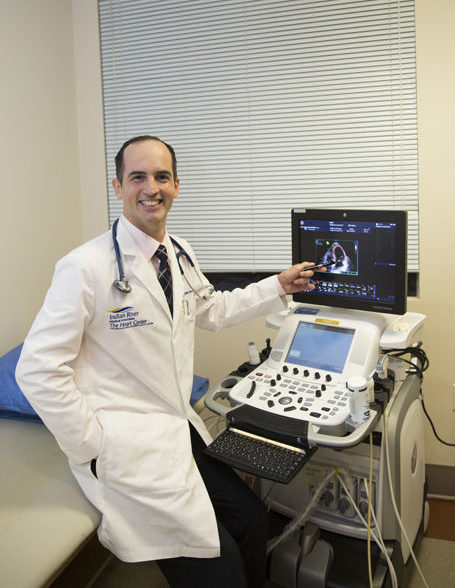
In the not-too-distant past, the only permanent fix for a failing heart was a heart transplant. As enthusiastically described by Vero Beach cardiologist Dr. Arley Peter, that’s now changing due to increasing use of ventricular assist devices (VAD).
A VAD is a miniature pump implanted in the chest that helps pump blood through the body. VADs have been widely used for decades as a temporary treatment for people waiting for a heart transplant, but are increasingly being chosen as a permanent treatment for heart failure.
“VADs are becoming a destination therapy, in that many of the patients will not need a heart transplant,” Dr. Peter says. “A number of medical centers in Florida have experience implanting these devices, including in Gainesville and Miami. They can really improve the quality of life of people with heart disease.” Dr. Peter says that patients with implanted VADs do need to see their doctor regularly, and that blood thinners must be taken.
First-generation VADs were introduced way back in the 1960s; the first successful implant was completed in 1966 by the famous cardiac surgeon, scientist and innovator Dr. Michael DeBakey. However, they were not in widespread use until many years later; only recently have there been technological advancements resulting in devices that are small enough and reliable enough for permanent implant.
The more widespread use of VADs is encouraging news, because some people with failing hearts may not be candidates for a heart transplant due to age, serious blockages of the arteries in arms or legs (peripheral artery disease), history of cancer, or unwillingness to make the lifestyle changes necessary to keep the donor heart healthy.
There is also a serious availability issue. The Department of Health and Human Services reports there are more than 4,200 Americans on the heart transplant waiting list. Most are on the list for months, and about 25 percent do not live long enough to receive a heart.
Although the treatment is not inexpensive, Medicare covers VADs as both a destination therapy and a bridge to a heart transplant.
As is the case with patients receiving a VAD, most people who receive a heart transplant enjoy a high quality of life, with few activity restrictions after three to six months. Recipient survival rates vary based on a number of factors, but in the United States the overall survival rate is about 88 percent after one year and about 75 percent after five years.
Heart problems, and ultimately heart failure, can be caused by:
Coronary artery disease
A weakening of the heart muscle (cardiomyopathy)
Disease of one or more of the heart valves
A heart problem you’re born with (congenital heart defect)
Failure of a previous heart transplant
One day, there may be another option to transplant – recent work by a team at Carnegie Mellon University (CMU) in Pittsburgh could lead to a world in which replacement hearts and heart tissue are 3D printed out of biological materials.
3D printing is the act of creating a three dimensional solid object from a digital model. It is now common practice in a number of diverse fields, from jewelry creation to construction to the aerospace industry. The 3D printers currently in use build hard objects, typically made of plastic or metal, by depositing material onto a surface layer-by-layer. Printing each layer requires solid support from the layers below, and printing with soft materials has to this point been limited. The team at CMU is working to change that.
Adam Feinberg is an associate professor of Materials Science and Engineering and Biomedical Engineering at CMU. He says, “The challenge with soft materials – think about something like Jell-O that we eat – is that that they collapse under their own weight when 3D printed in air. So we developed a method of printing these soft materials inside a support bath material. Essentially, we print one gel inside of another gel, which allows us to accurately position the soft material as it’s being printed, layer-by-layer.”
Vero’s Dr. Peter says the work of the CMU team is interesting and exciting, but it may be decades before it is used in clinical practice. “The heart is very complex, and there are many experimental stages that this technology will need to go through before it’s approved and in use.”
Dr. Peter says that heart problems are typically caused by a combination of risk factors. Some are what he calls “non-reversible” – for instance aging and genetics. But there are many factors that can be controlled and their effects reversed. Dr. Peter cited cholesterol, blood pressure, sugar levels and weight. “Doctors try to help patients fight these factors before heart problems occur,” he says. “Eating properly, not smoking, and regular exercise are all critical.”
Dr. Peter holds four board certifications in the areas of Cardiovascular Disease, Adult Comprehensive Echocardiography, Nuclear Cardiology and Internal Medicine. His office is located at 787 37th Street, Suite E140 in Vero Beach; the office phone is 772-778-8687.



